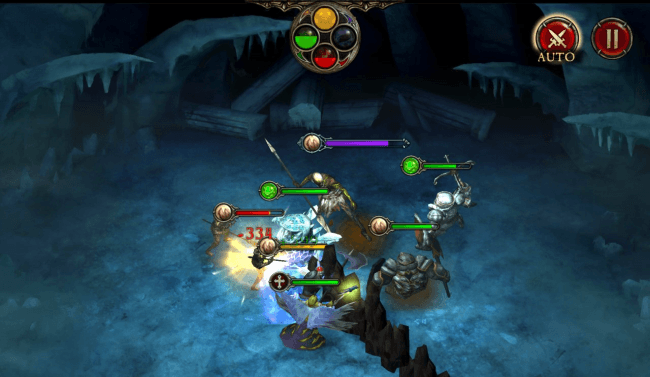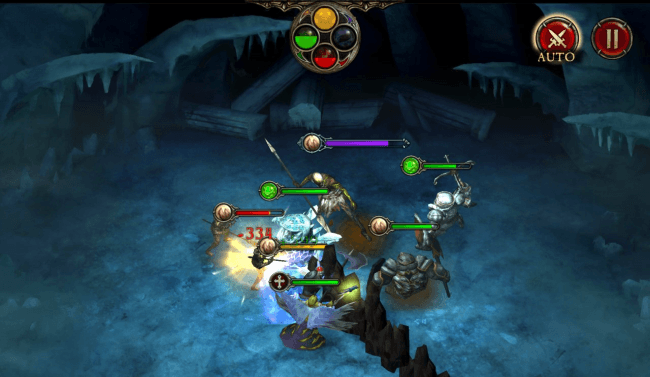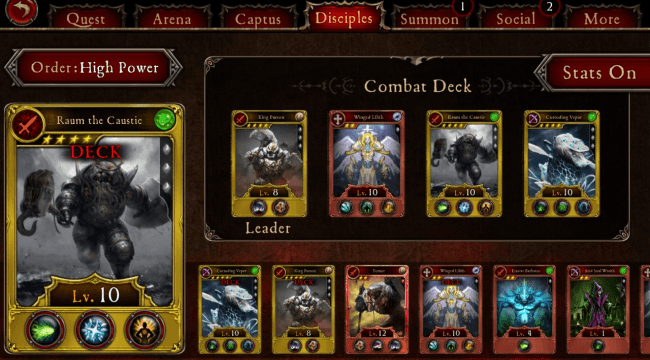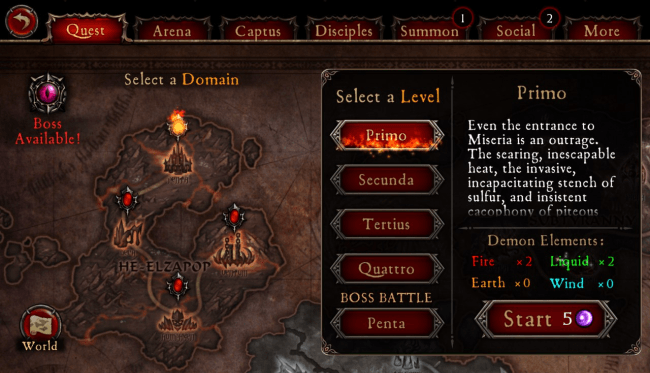- Wondering how to get Monopoly GO! free rolls? Well, you’ve come to the right place. In this guide, we provide you with a bunch of tips and tricks to get some free rolls for the hit new mobile game. We’ll …
Best Roblox Horror Games to Play Right Now – Updated Weekly
By Adele Wilson
Our Best Roblox Horror Games guide features the scariest and most creative experiences to play right now on the platform!The BEST Roblox Games of The Week – Games You Need To Play!
By Sho Roberts
Our feature shares our pick for the Best Roblox Games of the week! With our feature, we guarantee you'll find something new to play!All Grades in Type Soul – Each Race Explained
By Adele Wilson
Our All Grades in Type Soul guide lists every grade in the game for all races, including how to increase your grade quickly!
The Gate Review
I was disappointed to discover that in spite of all the pre-release promotion, The Gate has about as much to do with real-time strategy as Family Feud, and is in fact a straight-up collectible card battle game. But as I delved into it, I was also elated to learn that it’s a really, really good CCG, quite possibly the best one I’ve played since I broke free of my Rage of Bahamut-habit.
“Combines Real Time Strategy and Training mechanics,” the App Store entry for The Gate promises, and for a brief while I bought into it. Passing through the Gate into a hellish underworld filled with demons and wickedness, your only hope is to fight – and by fighting, your hope is sustained. As you move ever deeper into this sulphuric underworld, you’ll acquire “Disciples” who you can train, upgrade, and evolve, and who will do battle on your behalf against both computer-controlled opponents and the forces of your fellow players. This is where the RTS component comes into play, as instead of simply a static, numbers-versus-numbers contest, battles are rendered entirely in 3D and filled with impressive visual effects.
You move your characters by tapping and then dragging to where you want them to go, and unleash their skills in battle by tapping on icons at the top of the screen. To heal them, simply tap your healer – everybody has one – and then drag to the character in need. It’s simple and reasonably intuitive, although the lack of a zoom control makes it difficult to select a Disciple in the heat of a crowded battle.
But it’s also almost entirely unnecessary thanks to the “auto” function that will control the demons in your army with a good degree of competence. It may not be quite as effective as handling the situation personally, especially at higher levels, but the “fire and forget” convenience is handy; and if you don’t like how things are going, you can turn it off and assume direct control of the action at any time.

The CCG genre’s best disciple
I was disappointed to discover that in spite of all the pre-release promotion, The Gate has about as much to do with real-time strategy as Family Feud, and is in fact a straight-up collectible card battle game. But as I delved into it, I was also elated to learn that it’s a really, really good CCG, quite possibly the best one I’ve played since I broke free of my Rage of Bahamut-habit.
“Combines Real Time Strategy and Training mechanics,” the App Store entry for The Gate promises, and for a brief while I bought into it. Passing through the Gate into a hellish underworld filled with demons and wickedness, your only hope is to fight – and by fighting, your hope is sustained. As you move ever deeper into this sulphuric underworld, you’ll acquire “Disciples” who you can train, upgrade, and evolve, and who will do battle on your behalf against both computer-controlled opponents and the forces of your fellow players. This is where the RTS component comes into play, as instead of simply a static, numbers-versus-numbers contest, battles are rendered entirely in 3D and filled with impressive visual effects.
You move your characters by tapping and then dragging to where you want them to go, and unleash their skills in battle by tapping on icons at the top of the screen. To heal them, simply tap your healer – everybody has one – and then drag to the character in need. It’s simple and reasonably intuitive, although the lack of a zoom control makes it difficult to select a Disciple in the heat of a crowded battle.
But it’s also almost entirely unnecessary thanks to the “auto” function that will control the demons in your army with a good degree of competence. It may not be quite as effective as handling the situation personally, especially at higher levels, but the “fire and forget” convenience is handy; and if you don’t like how things are going, you can turn it off and assume direct control of the action at any time.
The nature of the combat means you’ll inevitably lose now and then, but that’s okay; nothing is lost, and it’s an incentive to upgrade and evolve your Disciples – which, if you haven’t picked up on it by now, are the cards you’ll collect in battle. This is where The Gate moves into full CCG mode. Valuable cards can be upgraded by sacrificing lesser cards to boost their levels, while two cards of the same type can be evolved, combining them into a single and more powerful card. You can also sell them for “soul coins,” the in-game currency used to pay for all this upgrading and evolving.
You’ll encounter other players as you go, who can be added to your friend list and then called upon to fight at your side in quests and against the Raid Bosses that intermittently appear. You can also opt to pit your deck against others in PvP brawls, although a cool-down period for individual cards used in the Arena ensures that you won’t be able to steamroll everyone with just a handful of super-high-powered cards.
Naturally, there are some things that require real money. “Hope,” the resource that lets you fight battles, is in short supply and recharges on its own very slowly, and refill potions are very rare commodities unless you’re willing to pay for them. Similarly, acquiring high-level cards requires high-level summoning, and doing that with any kind of regularity costs a lot of gold – which is to say, money. At the same time, The Gate does a good job of avoiding the “pay to win” trap, and everything that can be done with gold can also be done without it, just at a much slower pace. Obviously players who are willing to fork over a few bucks now and then will have a distinct advantage over those who do not, but I haven’t yet felt compelled to pay in order to play.
I do, however, feel compelled to play. I’ve spent a lot of time with various CCGs in the year-and-a-half since I reviewed Rage of Bahamut and none of them hooked me the way it did; yet The Gate is on the verge of doing just that. It actually lacks some of Bahamut’s central features, including factions and clan support, but whatever arcane mélange of art, audio, accessibility, difficulty, and pacing it is that lets a game bury its hooks deep into a player, The Gate has it. If you’re a fan of the genre, you owe it to yourself to try this game – and if you’re not, it’s a pretty good place to start.

The good

The bad
More articles...
Monopoly GO! Free Rolls – Links For Free Dice
By Glen Fox
Wondering how to get Monopoly GO! free rolls? Well, you’ve come to the right place. In this guide, we provide you with a bunch of tips and tricks to get some free rolls for the hit new mobile game. We’ll …Best Roblox Horror Games to Play Right Now – Updated Weekly
By Adele Wilson
Our Best Roblox Horror Games guide features the scariest and most creative experiences to play right now on the platform!The BEST Roblox Games of The Week – Games You Need To Play!
By Sho Roberts
Our feature shares our pick for the Best Roblox Games of the week! With our feature, we guarantee you'll find something new to play!All Grades in Type Soul – Each Race Explained
By Adele Wilson
Our All Grades in Type Soul guide lists every grade in the game for all races, including how to increase your grade quickly!








 “
“ “
“ “
“ “
“